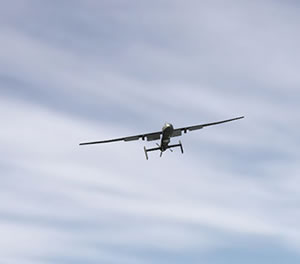
Since August 2013 the U.S. Defense Advanced Research Projects Agency (DARPA) has awarded several contracts for concept evaluations of the ship-based Tactically Exploited Reconnaissance Node (TERN) – a low-cost, Medium Altitude Long Endurance (MALE) unmanned aerial vehicle program aimed to explore an innovative vertical takeoff and landing UAS suitable for vessels with limited deck space. These contracts are the first element in a three phase development and demonstration program, aimed to demonstrate the system design and technology maturation, culminating in actual flight demonstrations taking place in 2017.
Over the course of three development phases that would demonstrate automatic launch and recovery and key technologies required by a TERN objective system. The mission performance goals for the operational TERN system are comparable to emerging land-based MALE UAV capabilities.
According to the agency, the ultimate goal for a TERN objective system air vehicle is to enable persistent ISR capabilities with payloads of 600 pounds while operating up to 900 nautical miles from a host vessel. The TERN objective system is intended to operate from multiple ship types, including Littoral Combat Ship 2 (LCS-2) class ships, and in elevated sea states.
Through the current TERN Phase I DARPA is exploring several conceptual designs and trade studies toward a future TERN design. Several companies were awarded contracts worth $2.8 – $2.2 million each for this work. These companies include Northrop Grumman, Aurora Flight Sciences, AeroVironment, Carter Aviation Technologies and Maritime Applied Physics Corp.
“TERN represents an entirely new category of UAS that has the potential to meet the evolving needs of customers for ISR capabilities” said Roy Minson, AeroVironment senior vice president and general manager of the company’s UAS business segment. Aurora also commented on its role in the program, Dr. John S. Langford, Aurora’s CEO and founder said his company is forming an industry team that includes leading experts in shipboard integration, naval operations, robotics, and flight controls. “Aurora’s TERN solution would be a disruptive technology capable of transforming how the US Navy conducts operations in the 21st century,” said . “TERN would enable unmanned air vehicles with significant payload capabilities to operate from a large number of ships that do not have runways.” Dr. Langford added.
Aurora would design a deployable UAS capable of launch and recovery from small naval ships. Leveraging innovative autonomous flight control technology originally developed for Aurora’s Orion UAS and Centaur Optionally Piloted Aircraft (OPA), Aurora would take a systems level approach to address the challenges of capture dispersion, capture load management, and ship-board integration with a minimal on-board footprint.




















